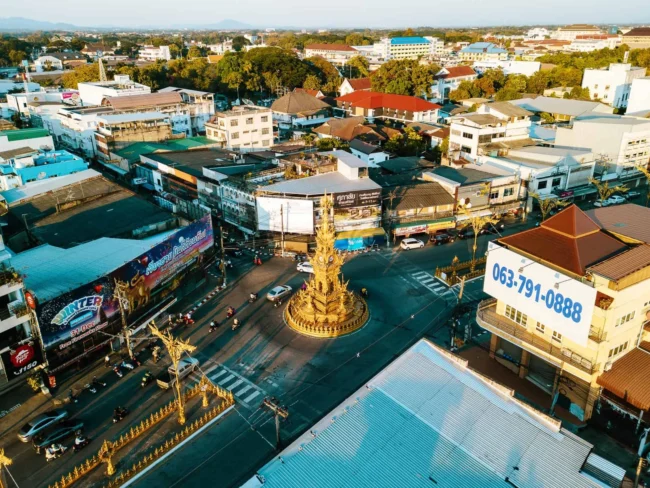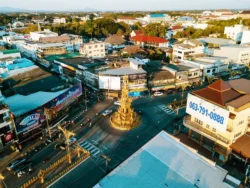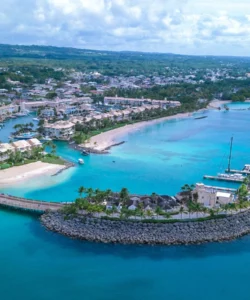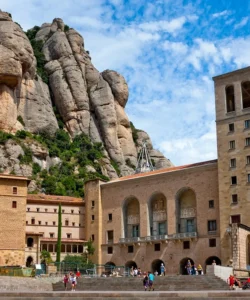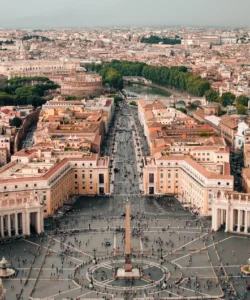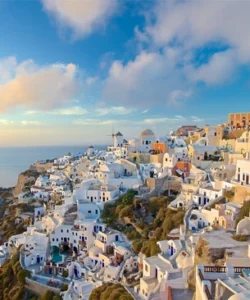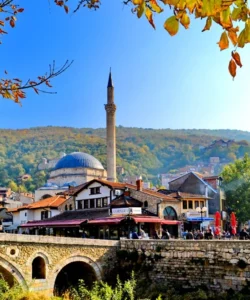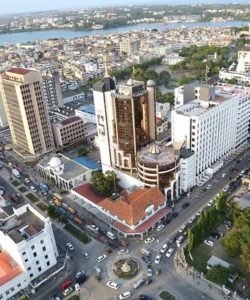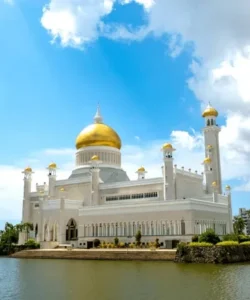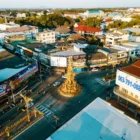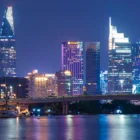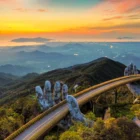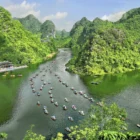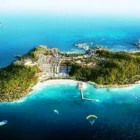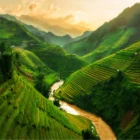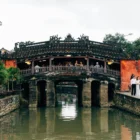Chiang Rai (เชียงราย), the northernmost major city in Thailand, serves as the provincial capital and a vibrant cultural hub in the Golden Triangle region. Founded in 1262 by King Mengrai, it is older than its more famous southern counterpart, Chiang Mai. While less bustling than Chiang Mai, Chiang Rai has cultivated a unique identity as a center for contemporary Lanna art and an accessible gateway to dramatic landscapes, hill tribe cultures, and the intriguing history of the Mekong region.
Name: Chiang Rai (เชียงราย)
Address: Mueang Chiang Rai District, Chiang Rai Province, Thailand. The city center is compact and walkable.
How to get there:
Chiang Rai is well-connected, primarily by air and bus:
- Other Options within Thailand:
- From Chiang Mai by Bus: A very popular route. Greenbus Thailand operates frequent, comfortable bus services from Chiang Mai’s Arcade Bus Terminal to Chiang Rai Bus Terminal 1 (Old Bus Station, in city center) or Bus Terminal 2 (New Bus Station, outside city center). The journey takes approximately 3-3.5 hours.
- By Private Car/Taxi: Can be arranged from Chiang Mai or other northern cities.
- No Train Service: Chiang Rai is not directly connected by rail; the closest train station is in Chiang Mai.
Landscape and Architecture:
Chiang Rai’s urban landscape blends traditional Lanna (Northern Thai) elements with modern infrastructure, surrounded by a picturesque natural backdrop:
- Compact City Center: The city center itself is relatively compact and easy to navigate, with a mix of guesthouses, restaurants, shops, and some local markets.
- Unique Temples (Modern Art & Traditional): Chiang Rai is globally famous for its highly artistic and often unconventional temples, which serve as its primary architectural landmarks:
- Wat Rong Khun (The White Temple): An iconic, dazzling white Buddhist temple (privately owned by artist Chalermchai Kositpipat), covered in intricate mirror mosaics. Its surreal, sculptural, and highly symbolic design makes it unlike any other temple in the world.
- Wat Rong Suea Ten (The Blue Temple): A striking contemporary Buddhist temple, predominantly blue with elaborate golden ornamentation and a large white Buddha image inside. Its vibrant color and artistic details make it highly photogenic.
- Wat Huay Pla Kang (Big Buddha / Guan Yin Statue): While often mistaken for a Big Buddha, this complex features a gigantic white statue of Guan Yin (Goddess of Mercy) and a unique nine-story pagoda with Chinese-Lanna influences.
- Wat Phra Kaeo: A historically significant temple that once housed the Emerald Buddha (now in Bangkok’s Grand Palace). It’s a more traditional Lanna-style temple.
- Baan Dam Museum (The Black House): Not a temple, but a fascinating art installation and museum complex created by the late national artist Thawan Duchanee. It comprises over 40 dark wooden structures (some traditional Lanna, some wildly avant-garde) filled with animal remains, tribal artifacts, and unusual art pieces, exploring themes of life, death, and nature.
- Chiang Rai Clock Tower: A golden, ornate clock tower in the city center, designed by Chalermchai Kositpipat (the artist behind the White Temple). It comes alive with a captivating light and music show every evening, serving as an urban landmark and gathering point.
- King Mengrai Monument: A memorial to the city’s founder, King Mengrai, a significant historical figure for Northern Thailand.
- Rivers and Mountains: The city is situated on a river plain, with the Kok River flowing through it, and is surrounded by rolling hills and mountain ranges, providing a beautiful natural setting and cooler temperatures.
- Rice Paddies and Tea Plantations: Beyond the urban core, the surrounding rural landscape features vast green rice paddies and scenic tea plantations (like Choui Fong Tea Plantation), adding to the agricultural and natural charm of the province.
What makes it famous:
Chiang Rai is famous for:
- Unique and Artistic Temples: It is home to some of Thailand’s most visually stunning and artistically distinct contemporary temples, notably the White Temple and Blue Temple, which have become global social media sensations.
- The Golden Triangle: As a gateway to the infamous Golden Triangle region, where the borders of Thailand, Laos, and Myanmar meet, it offers historical insights into the opium trade and riverine culture.
- Lanna Culture and Art: It serves as a significant center for Lanna (Northern Thai) culture, showcasing traditional architecture, art, and handicrafts, particularly through the works of its renowned contemporary artists.
- Baan Dam Museum (The Black House): Its intriguing and often unsettling collection of art and artifacts provides a unique and thought-provoking cultural experience.
- Hill Tribe Villages: Opportunities to visit and learn about the diverse hill tribe communities in the surrounding mountains, including Akha, Lisu, Lahu, and Karen people.
- Outdoor Activities: Offers various outdoor activities, including trekking, cycling through rural areas, and boat trips on the Kok River.
- Chiang Rai Night Bazaar and Walking Street: Lively night markets offering local food, handicrafts, and entertainment.
Differences from some other wonders:
Chiang Rai City distinguishes itself from other major Thai cities and cultural centers in several key ways:
- Contemporary Artistic Temples: While other Thai cities (like Bangkok or Chiang Mai) boast ancient and traditional temples, Chiang Rai’s fame is heavily driven by its modern, highly artistic, and often surreal temples (White, Blue, Huay Pla Kang) created by contemporary artists. These are not centuries-old structures but recent, highly conceptual architectural and spiritual statements.
- Gateway to the Golden Triangle: Its geographical position makes it the direct and most convenient gateway to the Golden Triangle region, a historically and geographically significant area at the crossroads of three countries. This gives it a distinct historical and geopolitical context.
- More Relaxed and Authentic Vibe (Compared to Chiang Mai): Often described as Chiang Mai’s “adventurous little brother,” Chiang Rai offers a slower pace, fewer crowds, and a more authentic, local Thai atmosphere compared to the more tourist-developed Chiang Mai.
- Art-Focused Cultural Identity: Beyond traditional Lanna culture, Chiang Rai has a strong identity as a hub for contemporary art, particularly with the influence of artists like Chalermchai Kositpipat and Thawan Duchanee. This blend of traditional and cutting-edge artistic expression is a unique characteristic.
- Proximity to Unique Natural Features: Its location provides relatively easy access to specific natural wonders like the Khun Korn Waterfall (a tall, impressive waterfall) and local hot springs, offering natural escapes alongside cultural sites.
In essence, Chiang Rai City is a captivating wonder that fuses ancient Lanna heritage with striking contemporary art, serving as a tranquil yet engaging gateway to the mystical landscapes and diverse cultures of Northern Thailand’s Golden Triangle region.
